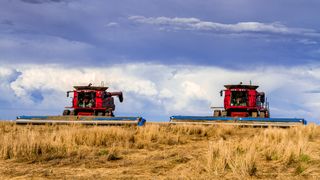While many think of innovation as something that solely happens when ambitious young people start working in Silicon Valley garages, quite a lot of innovation is actually occurring in one of the world’s oldest sectors: agriculture. AgTech, a catchall phrase describing technology-based innovation related to products for the agriculture and food value chains, is more popular than ever.
One clear indication of AgTech’s ascendency is the fact that last month, more than 1,000 people from more than 50 countries attended the World AgriTech Summit in San Francisco, by far the largest and most international AgTech summit to date. Australia’s role as the country sponsor for the event further highlighted the global recognition of the importance of such an event.
These milestones and broad engagement signal the growing maturity of an innovation sector that previously had attracted small investment and little interest. It was really only in the last few years that the AgTech scene in the United States broke out and became more mature than anywhere in the world.
American momentum in AgTech has grown on the back of notable liquidation events in 2017, such as John Deere’s US$350M purchase of Blue River Technologies, which uses artificial intelligence to do robotic plant spraying, and Pioneer Dupont’s US$300M purchase of Granular, which does enterprise resource planning for farming. The entire AgTech sector is also benefitting from the macro-trend of digitisation of industry, most clearly seen in the automotive sector with Lyft, Uber, MobileEye, Waze, and others. Indeed, 2017 was a record year for investment into US agriculture and food startups with more than $1.5B of private capital flowing into the space. The predominantly US-based venture capital (VC) primarily funded US and Israeli endeavours.
In contrast and despite Australia having a subsidy-free, highly productive agriculture sector, the Australian AgTech startup scene is small. In a recent report my own venture capital firm conducted on the AgTech around the world, Australia barely registered in terms of VC-dollars being committed to domestic AgTech innovation companies, with less than A$10 million in deals recorded – a rounding error compared to the US$1.5 billion in US AgTech deals.
Although small compared to San Francisco’s World AgriTech Summit, we very well may be at a tipping point for the Australian AgTech market.
Notwithstanding poor aggregate numbers and startup metrics, there are signs that Australia may be developing an AgTech ecosystem. Multiple new accelerators – programs that provide startups investment, connections, and mentorship – have been created to assist entrepreneurs in creating new AgTech-focused companies. These include SproutX and RocketSeeder, both located in Melbourne. These efforts are also enhanced by the strong AgTech scientific infrastructure Australia already has in place through research and development corporations and CSIRO – both critical for building technology companies.
Australia hosted its very own AgTech conference last month, too. While the Informa AgTech Summit in Melbourne was undoubtedly a domestic affair, having almost no foreign attendees and no foreign technology companies exhibiting, it nonetheless did have many of the research and development corporations, scientific groups, farming operators and Ag chemical distributors that showed the seriousness of Australia’s potential in this area.
Although small compared to San Francisco’s World AgriTech Summit, we very well may be at a tipping point for the Australian AgTech market. However, to really capitalise on any domestic momentum, Australia will need to get institutional investors to write cheques – the sort of investment that is ubiquitous in Silicon Valley. The challenge is how we can harness these opportunities Down Under.






